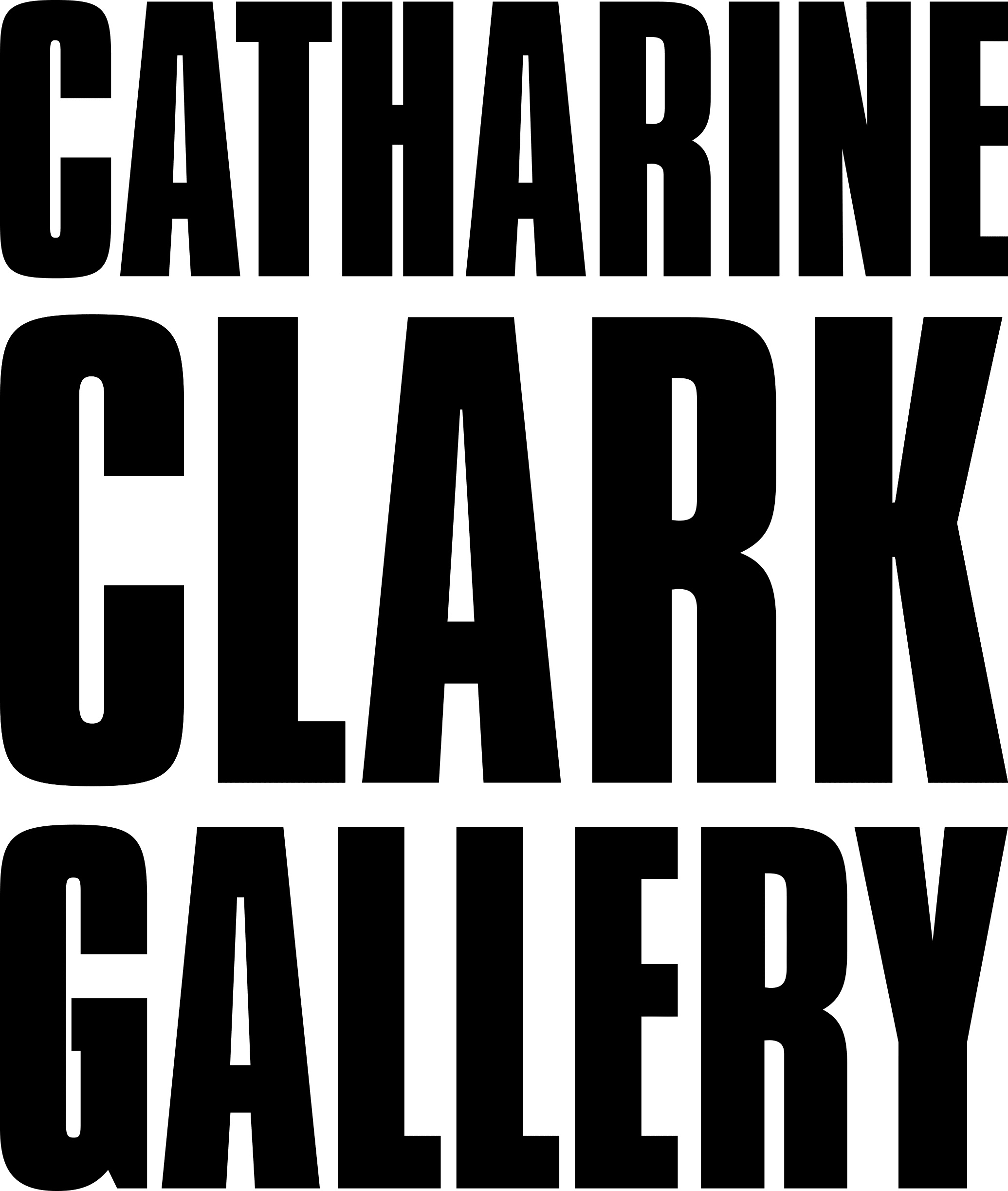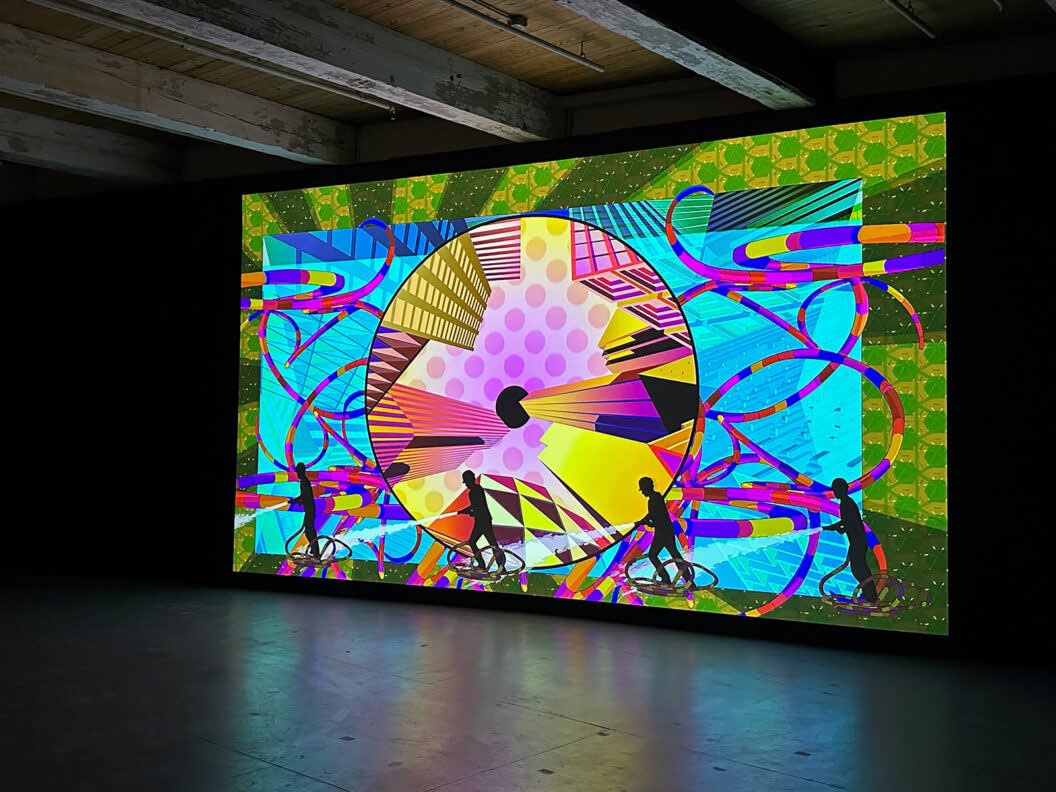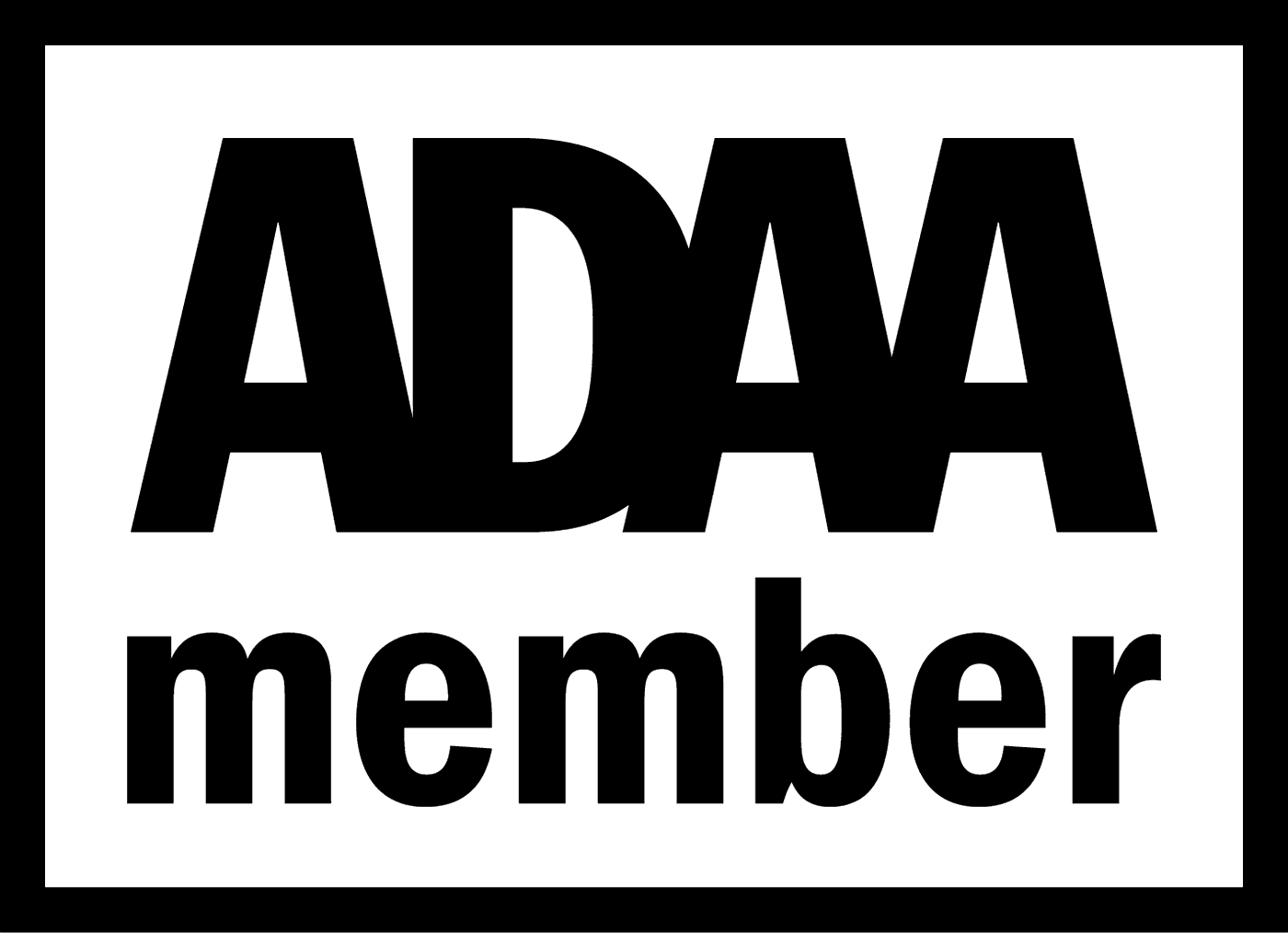The modern era can be mapped, at least in part, by the parallel development of a genre of premonitory fable commonly known as “apocalyptic science fiction.” This consists of tales that relate the cyclical growth, collapse, and aftermath of human industrial society, along with the desolation wrought by unfettered growth, extraction, and ecological waste upon the natural world, which ultimately rises again, narratively triumphant. Of course, the romance of the ruins and its pessimistic beauty have long held our art and literature in its thrall: from the timeless influence of Ecclesiastes to Thomas Cole’s epic series of narrative landscape paintings, The Course of Empire.
The latter served as one of the conceptual inspirations for the work of animation artist and painter Chris Doyle, whose own whimsical investigations into apocalyptic sci-fi are being presented this summer at the Massachusetts Museum of Contemporary Art (MASS MoCA) in North Adams with a vast video-projection installation titled The Coast of Industry (2024). This newly commissioned work is part of Doyle’s ongoing series of digitally animated videos, which are typically projected or shown across multiple screens as infinitely scrolling panoramic landscapes. The Coast of Industry shows nature obdurately abiding through cycles of build, collapse, and regeneration.
Sean Capone
Let’s start by talking about the projection installation The Coast of Industry that’s at MASS MoCA. What’s the history of these works? This is the largest video piece you’ve ever produced, right?
Chris Doyle
Around 2018, I had an idea to develop an animation that would be built the way an organism evolves. I started with a single cell and developed a motion and, from there, a looping mechanism. From these loops, a more elaborate organism would emerge. Ultimately, that project became Parables of Correction (2020). The title comes from Correction, a novel by Thomas Bernhard. At the core of the novel is the idea of constantly revising until what you end up with bears no resemblance to where you started, which definitely resonated with my own process. The novel spurred me to embark on a long-term project in which the animations from Parables of Correction would evolve over years through a process of constant revision. It has evolved into this new version, The Coast of Industry, which is a six-channel work and is the largest piece I’ve made. In a way, the project makes an explicit connection between revision, editing, evolution, and mutation as they work in the artistic process and in genetics.
SC
I can clearly see the lineage of the new piece from the earlier ones. In each one, you have these whimsical, abstract figures operating Rube Goldberg–like contraptions along a surrealist assembly line. Are these supposed to be allegories about the holistic interconnection of life, nature, and energy, or about the repetitive absurdity and scrolling, distracted attentions of modern life?
CD
With The Fabricators (2021), I revisited the machines from Parables and thought of them as organs in a body, so the task became to figure out how they worked together as a single system. I was rigorous about how everything had to have function, and it all had to work together, however absurdly. Some of the figures are building parts of the system, while others seem to be lubricating it or recycling byproducts and waste. No question, the loops have a Sisyphean aspect to them. And as with Swell (2017), I was again drawing parallels to my own cyclical activity as an animator. Each frame I drew was a revision of the one before, only to arrive in the same place. With Coast, I decided to think more seriously about the nature of my own industriousness.
SC
So there were aspects which were very personal as well?
CD
A couple years ago, my father died of Alzheimer’s. He had always been extremely hardworking and rarely still. It was difficult for him to stop working. Before he died, I watched him incessantly moving around the house, unable to sit down. When we did get him to sit, he was up within a minute, sure that he had something he should be doing but completely unable to remember what that might be. Not long after, I read The Dawn of Everything by David Graeber and David Wengrow. A big part of that book centers on seeing that industriousness is not necessarily programmed into us, but is a product of Western capitalism. Coast is really a meditation on this question.
SC
In Swell, for example, you use textures and patterns to build a narrative space that’s perpetually unfolding and transitioning through elements of surprise and comic effects, like watching an illusionist’s stage trick. Do the motion and story development arise from the visual form and content itself? Or is it the other way around?
CD
Swell is the culmination of a series of animations inspired by Thomas Cole’s Course of Empire series, a cycle of five paintings depicting the rise and fall of a civilization. With those pieces, I worked in a way that was a little more like a storyboard. I would develop disconnected scenes over a long time, and then the motion emerged from finding fluid connections between them. I’d start with some unrelated visual threads like the assembly line, not knowing where I am going until the transitions begin to tell me. Swell focused on industrial culture in the age of climate change, and to some extent it came out of my own experience working in a factory. In some of the transitions, I am reminding you of the repetitive labor of the animation and the presence of the animator. There is an interesting conversation between Swell and Coast, because one is all about the transitions, while the other has none.
SC
For as long as I’ve seen your work, it’s always presented as large-scale projections or on architectural screens and digital billboards. It just wouldn’t work playing on a small TV mounted on a wall, right? What is the relationship between the image and the spatial experience?
CD
Scale is something I think about all the time, whatever the media. Most of my animation work that is in private collections is shown on conventional monitors, and, of course, I draw it at that scale. At the same time, you’re right that they are often conceived to be shown at an architectural scale. I grew up equally enamored by both the intimacy of Saturday morning cartoons and the magnificence of the drive-in movie. I am always thinking about the plane of the screen in relation to the body. I don’t think that necessarily makes it immersive, like VR. You are still experiencing the space as if through a window looking out onto the landscape.
SC
At this scale, you can’t say it’s cinematic, like sitting in a theater; I guess you could say “expanded” or “post-” cinematic. It’s immersive in the sense of viewers’ perceptions. Their body has to get physically involved to traverse the space and look at the whole picture.
CD
This latest piece provided some new challenges since the projection is 25-feet high and 260-feet long, and the experience of standing in front of it was very difficult to imagine in the abstract. In reality, the image is so large that you have to move around a lot to figure out how you want to experience it. Your relationship to the space in the piece is further complicated by the fact that while it is a panoramic landscape, there are times when the space flattens out like the space in a medieval painting. In testing it, I found myself constantly moving between multiple viewpoints, sometimes getting up very close and sensing the materiality of the light as the individual pixels move across the painted brick wall. The scale of the space has a similar impact on the sound. The score by Jeremy Turner and the sound design by Owen O’Neill have to be designed to move throughout the space by taking the score and spatializing it, then weaving it into a complex three-dimensional presence.
SC
Animation is a widely varied field nowadays. What are some of your influences? What is it specifically about the flat, graphic style of cartoons and cel animation that connects to your artistic concerns?
CD
I’ve always drawn a lot. I started out as a painter in college. A lot of my references tend to come from the world of painting: Hieronymus Bosch and Pieter Bruegel, Renaissance altarpieces, illuminated manuscripts and Persian miniatures, Paul Klee, Charles Burchfield are some. The fusion of nature, pattern, and architecture in mosques. William Morris wallpaper. Roberto Burle Marx is definitely a preoccupation. I started working in stop motion, but I found even a still camera proved too much gear for me. I finally let myself just draw, and I started making these frame-by-frame digital pieces. I sort of fumbled my way through the software, always feeling like I was in over my head.
At the same time, there is a healthy dose of Chuck Jones, Jan Švankmajer, and Hayao Miyazaki. Certain aspects of cartoon animation have always fascinated me, like the way the backgrounds in early Disney are these gorgeous landscapes painted on glass, or the rotating Road Runner backgrounds. In the end, it’s the slow and plodding labor of the frame-by-frame process that I am really drawn toward. I have come to understand the accumulation of small things as both a way of working and a way of understanding the world.
SC
I notice you don’t cite any other contemporary artists working with video or digital animation.
CD
Giants who have written the history of video-installation art—artists like Bruce Nauman, Bill Viola, Pipilotti Rist, Tony Oursler, Marina Zurkow, the great William Kentridge—may not seem like obvious influences, but their work is like an architecture I get to inhabit.
SC
Are your works about the past, the future, or an endlessly looping present?
CD
I wasn’t thinking about it in terms of our human time frame as much as imagining an alternate world where the species that exist have a more harmonious relationship to the land. It seems too easy to produce work that is ominous and adds to people’s anxieties. With this project, I was aiming to delight.






